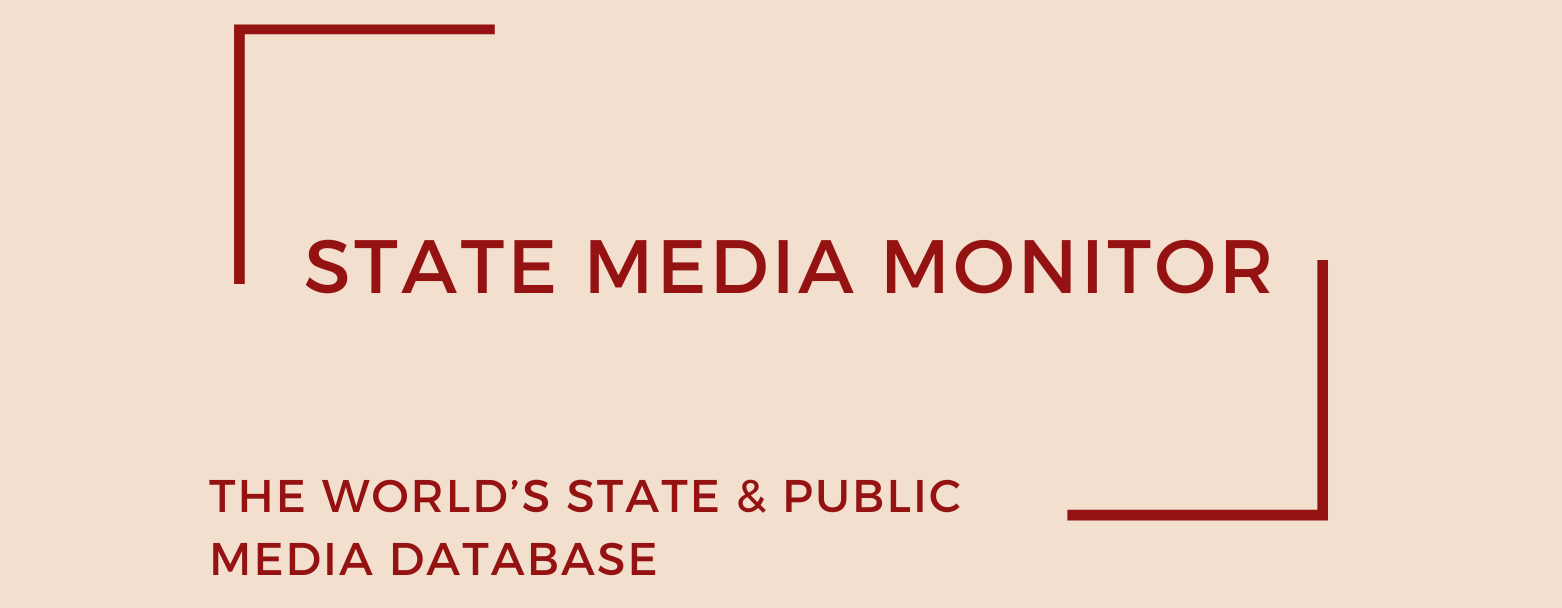Vietnam Television (VTV)
Vietnam Television (VTV) is the national state-run television broadcaster of Vietnam. Established in 1970, it is one of only two broadcasters with nationwide reach, commanding a central role in shaping the country’s televised public discourse. In 2024, VTV managed 11 channels, while broadcasting 252 hours daily.
Media assets
Television: VTV1, VTV2, VTV3, VTV4, VTV5, VTV6, VTV7, VTV8, VTV9
State Media Matrix Typology
Ownership and governance
Vietnam Television functions as a government agency under the authority of Decree No. 02/2018/NĐ-CP, which delineates its organizational structure and operations. The broadcaster is directly answerable to the central government, with senior leadership appointed through political channels. Specifically, the Prime Minister holds the authority to appoint both the General Director and Deputy General Directors.
Lê Ngọc Quang, a member of the Central Committee of the Communist Party of Vietnam and Secretary of VTV’s Party Committee, served as General Director of Vietnam Television from April 2021 until October 2024. His appointment by then-Prime Minister Nguyễn Xuân Phúc was emblematic of the Party’s continued stewardship over the broadcaster. However, in October 2024, the Politburo reassigned him to serve as Provincial Party Secretary of Quảng Bình for the 2020–2025 term. Following this decision, he ceased to hold the General Director position at VTV. As of mid-2025, Lê Ngọc Quang is no longer affiliated with VTV’s leadership, having taken up his new role in Quảng Bình Province.
In an effort to build international collaboration, VTV entered into a partnership with Chinese media counterparts in 2025–2026. The agreement centers on co-producing content related to technology, AI, infrastructure, and shared political and cultural milestones—an initiative set to enrich programming and strengthen bilateral understanding.
A landmark Decree No. 47/2025 redefined VTV’s organizational architecture, anchoring its mission across 21 core functions, from news dissemination and cultural programming to digital innovation. The new structure comprises 22 departments, including dedicated technical and regional centers in Ho Chi Minh City, the Central Highlands, and the Mekong Delta. Leadership remains in the hands of a General Director and up to four Deputy General Directors, appointed (and potentially dismissed) by the Prime Minister.
As of January 15, 2025, VTV emerged as the sole national television broadcaster after the shutdown of all VTC channels and other national broadcast outlets. This sweeping consolidation was part of a broader media restructuring strategy. Critics have decried this as a narrowing of public discourse, warning it could escalate state-driven propaganda.
Source of funding and budget
VTV is primarily financed through allocations from the state budget, consistent with its status as a government agency. Although the broadcaster also generates additional revenue through advertising and commercial programming, precise financial data, such as annual income, operating costs, or detailed budget breakdowns, remains opaque. No audited financial statements or public disclosures are available in the public domain, limiting external scrutiny of VTV’s fiscal operations.
According to media reports, in 2024, VTV drew in approximately VNĐ3.64 trillion (circa US$ 144 million) in revenue—a testament to its expanding viewership and commercial clout.
Editorial independence
VTV’s editorial line is firmly aligned with the ideological and policy frameworks of the Communist Party of Vietnam. In line with its legal mandate, the broadcaster is tasked with disseminating Party guidelines, promoting state policies, and reinforcing official narratives on both domestic and international issues.
To date, no domestic legislation, institutional safeguards, or independent oversight mechanisms have been identified that would guarantee or even nominally protect the editorial autonomy of Vietnam Television. In practice, VTV operates as a mouthpiece for the state, with its news and current affairs programming closely reflecting the official positions of the government and ruling Party.
This alignment has drawn criticism from international observers and press freedom advocates, particularly in light of the tightening of Vietnam’s cyber and media control laws in recent years, including enforcement mechanisms under the Cybersecurity Law (2019) and the Law on the Press (2016). These frameworks further entrench government control over editorial content across all major media institutions, with VTV as a central pillar in the state’s information architecture.
August 2025
Citation (cite the article/profile as part of):
Dragomir, M. (2025). State Media Monitor Global Dataset 2025.
Media and Journalism Research Center (MJRC).
Zenodo.
https://doi.org/10.5281/zenodo.17219015
This article/profile is part of the State Media Monitor Global Dataset 2025, a continuously updated dataset published by the Media and Journalism Research Center (MJRC).
